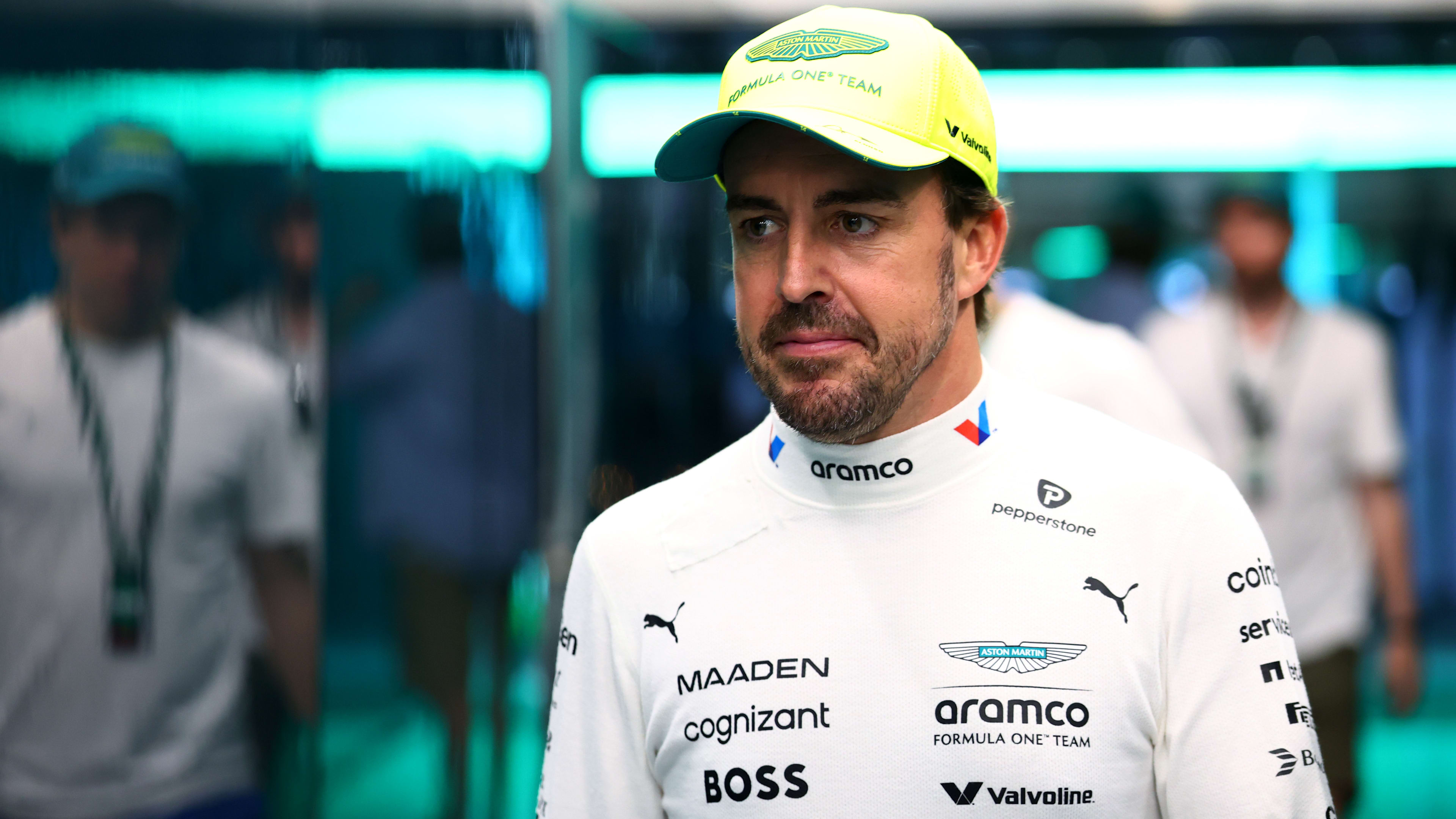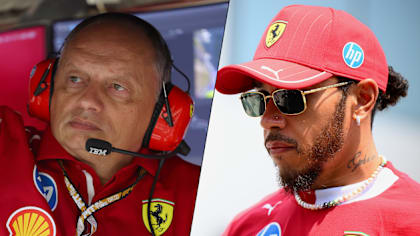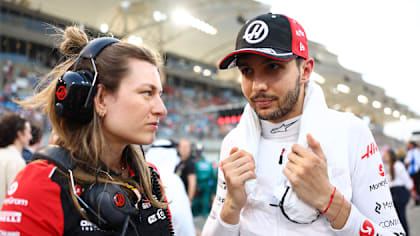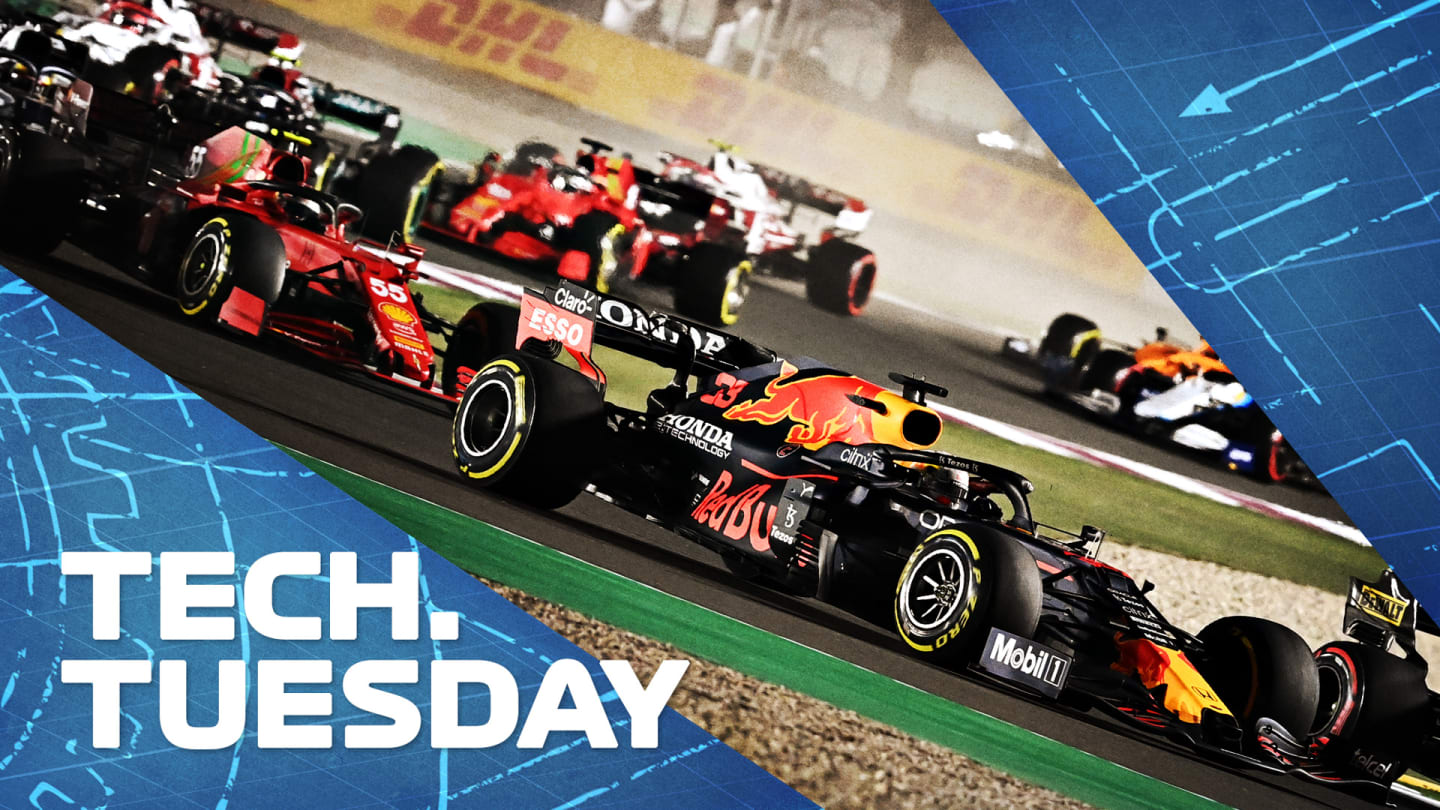
Technical
TECH TUESDAY: The banned features that will make a big impact on 2022's wheel-to-wheel action

Share

Sweeping new aerodynamic changes, which will affect almost every part of the car, await in 2022. Mark Hughes looks at how banning certain devices around the wheels and brakes bodes well for close racing – with technical illustrations from Giorgio Piola.
Whatever the outcome of the thrilling 2021 championship battle, these last two races are significant in another way: it’s the last time this formula of car, introduced in 2017, will be seen on track. For 2022 the radically new aerodynamic regulations take effect, designed after deep study, to improve the raceability of the cars when they go wheel-to-wheel.
READ MORE: 10 things you need to know about the all-new 2022 F1 car
One of the guiding principles behind how this will be achieved is to drastically narrow the outwash created by the cars, making the wake behind less disturbed, so the following car doesn’t lose as much of its downforce as is currently the case.
The overall shape of the new cars, their underbody design, body surfaces and wings have all been regulated with this aim in mind. But there are other details within the suspension and wheels which have also been subject to regulatory change, for the same underlying reason.
F1 TV Tech Talk: How will the 2022 F1 car improve overtaking?
In the last few years, it has become commonplace for the upper suspension arms to be mounted on an extension from the wheel hub rather than directly on the hub itself.
This was an innovation seen first on the Mercedes and Toro Rosso cars of 2014 and the reasons behind it are purely aerodynamic. It clears a much bigger path for the airflow, allowing it to be turned into outwash much more forcefully than if the upper suspension linkage was in the way. This will no longer be permitted and the suspension mounting points must be within the height of the wheel hub.
READ MORE: How Ferrari's Mexico City brake experiment gave us a glimpse of F1's future
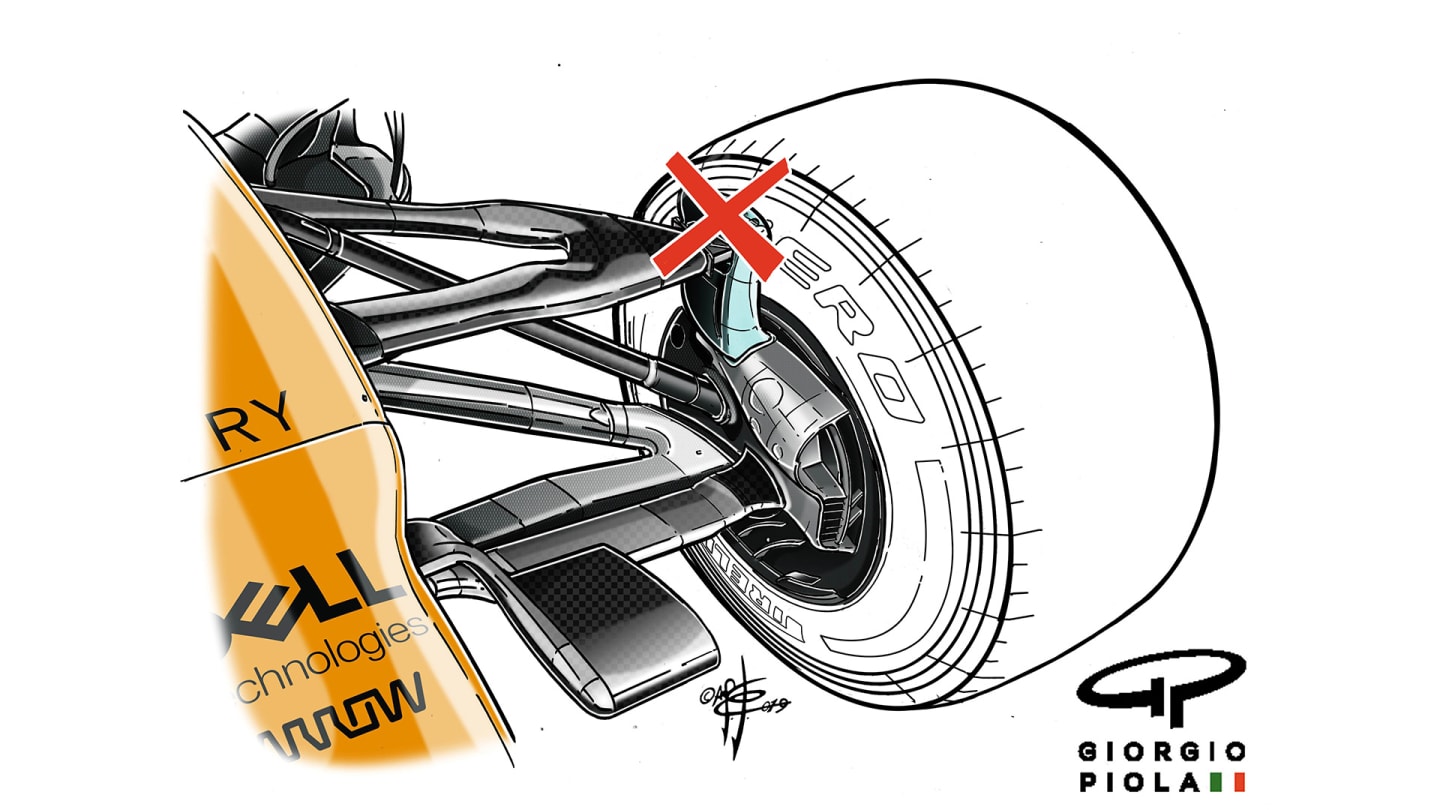
Here the McLaren can be seen to typify the current way of mounting the upper front suspension link on an extension rising up from the wheel hub. From next year this is banned and the mounting point must be within the wheel rim height
The new regulations are not expected to initiate the return of pullrod front suspension (last used by Ferrari in 2016). The reasons for the current universal use of pushrod – allowing a more compact arrangement in an aerodynamically sensitive part of the car – still apply.
With a pushrod, the rockers on the inboard part of the suspension in the middle of the car are mounted up high, causing the suspension arm to push upon it as the wheel moves up over a bump.
WATCH: F1's Head of Aero gives us an exclusive insight into how the 2022 car was designed
With a pullrod the rockers are mounted low, so the suspension arm pulls upon it in the same situation. Having the rocker up high allows the lower part of the nose to be narrower and for the air to be turned in the required direction more effectively. This air wont be directed in the same way with the new cars, but with the aim of reducing the outwash, it is still useful to have more ability to turn the air in the required direction – in this case to the underfloor of the car.
As Mercedes and others then began to look at ways of making further aero efficiency gains around the rear of the car, so the hub extension has even been seen on the rear suspension. This too will have created a more disturbed wake behind it and so will not be seen in next year’s generation of cars.
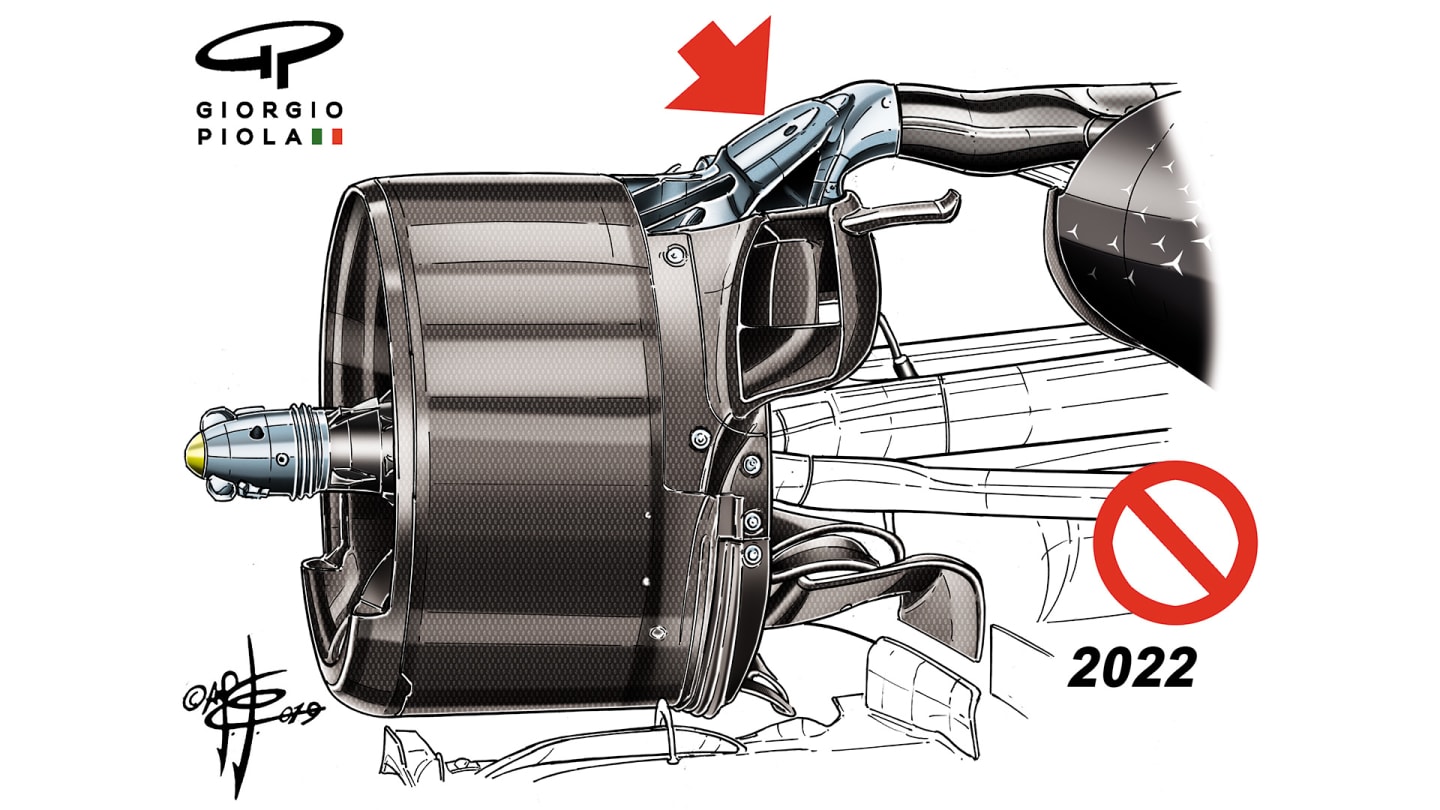
Mercedes pioneered the use of the hub extension on the rear suspension and this too has been banned for ’22
One other key restriction upon the suspension for 2022 is that upon the levering effect of the front ride height when a lot of steering lock is applied. This was a key innovation introduced by Ferrari in 2018 whereby the front ride height is reduced into those slow corners which require high steering lock, and which always tend to induce understeer.
Using a bracket on the lower suspension arm, the steering inputs can be made to follow a different path beyond a certain threshold of lock, one which obliges the front of the car to be pulled down to a lower ride height. This has the effect of giving the car more aerodynamic grip, but if the airflow to it is spoilt by the car ahead, it will be far less effective, thereby increasing the advantage to the car in front.
For 2022 the articulation can be no more than 25mm inboard of the wheel hub, thereby limiting just how much leverage can be induced.
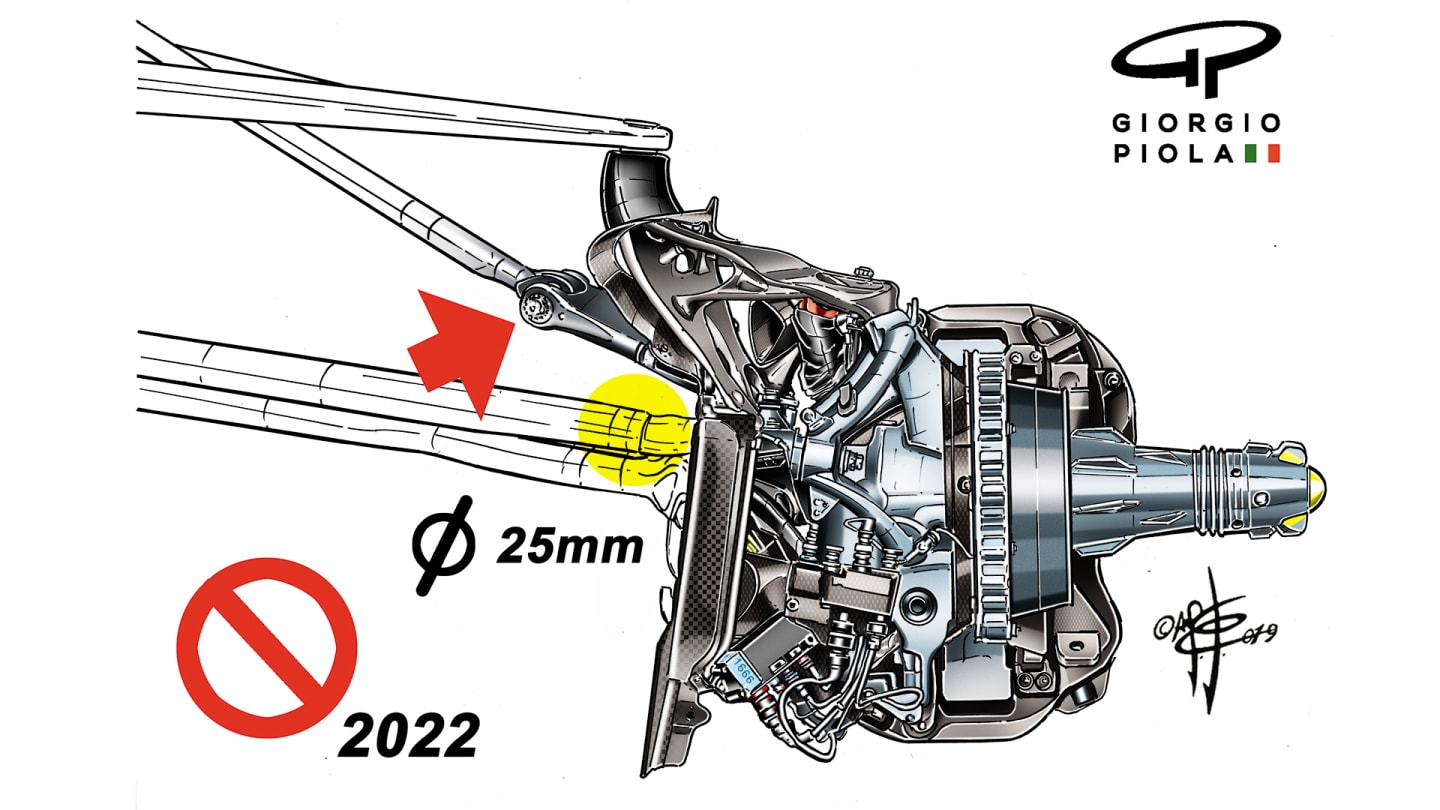
The articulated joint (red arrow) which allows the car to be lowered on high steering lock can be no more than 25mm inboard of the wheel hub from 2022
In simulation, the new regulations have suggested that the following car, when running one car length behind, retains 84% of its total downforce compared to around 40% in the case of the current cars.
That number suggests an exciting new era of wheel-to-wheel racing.
YOU MIGHT ALSO LIKE
News ‘I’m 2000% behind him’ – Vasseur backs Hamilton amid early Ferrari struggles as he insists ‘potential is there’
NewsF1 Unlocked WIN Red Carpet Unlocked - F1 The Movie World Premiere
News Ocon opens up on working with ‘very impressive’ new Race Engineer Laura Mueller at Haas

Feature Theme park fun, discos with Russell and architect dreams – Getting to know the real Kimi Antonelli
